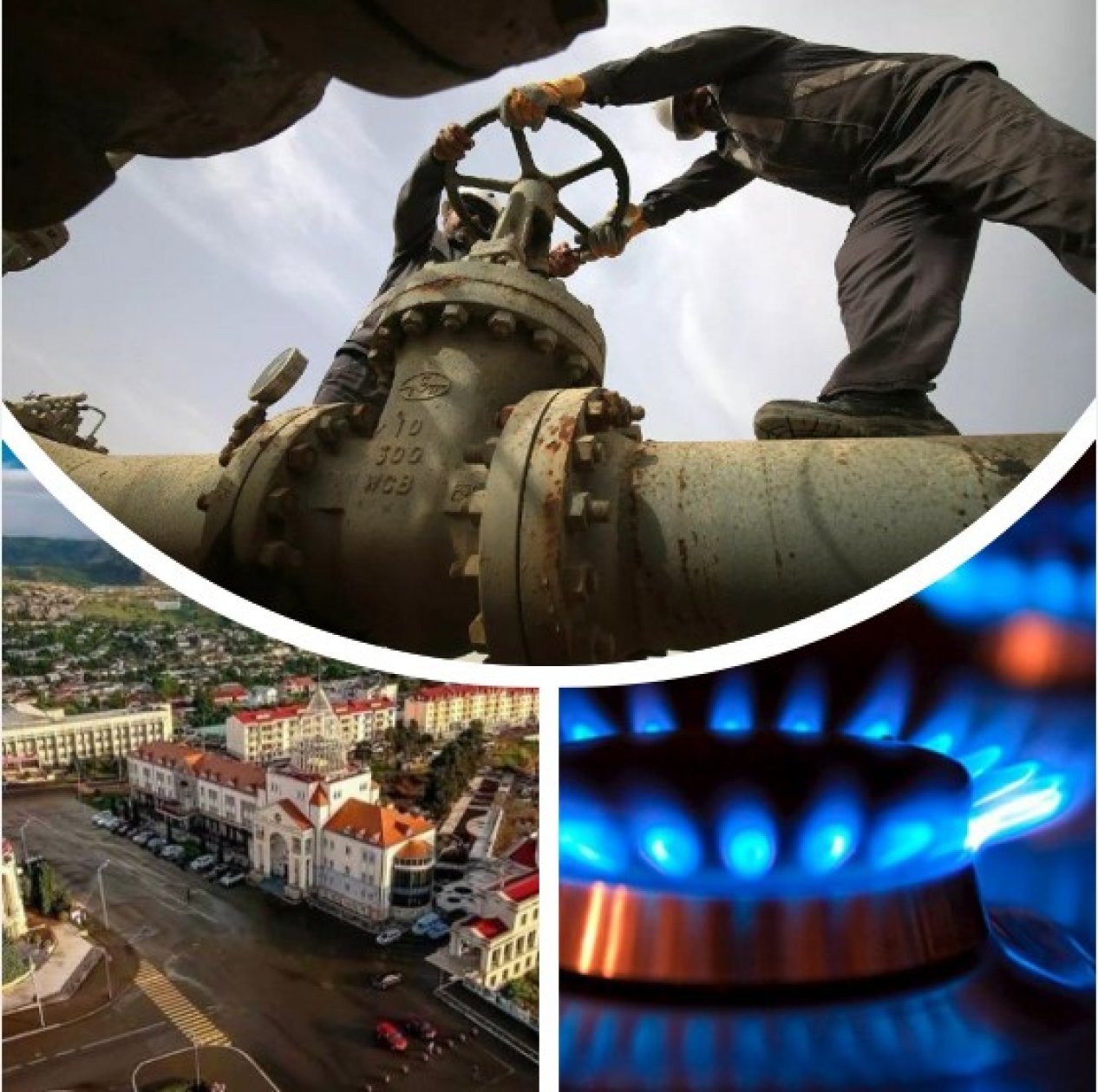
The gas supply to Khankandi, which was suspended for some time, has been restored since July 8. However, Armenian sources said that a day later there was another interruption in the supplies. source
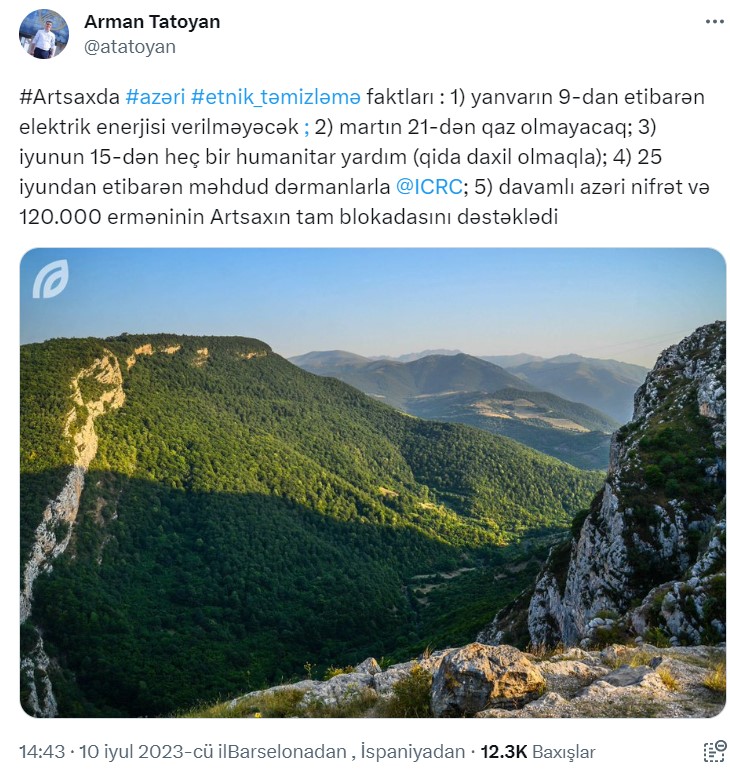
FaktYoxla Lab. has tried to clarify the causes of this problem.
It is known from the opinions of separatist Beglaryan, one of the main propagandists of the unrecognized entity, that the company temporarily responsible for gas transportation in the Karabakh economic region of Azerbaijan took measures to restore gas supply on July 9, and currently works are underway to supply gas to all subscribers. Reference
- Beglaryan himself admitted that the gas transported from Armenia to Karabakh was restored. That is, the accusation of Armenian media and social media activists that "gas has been cut off again" is a lie.
Armenians also use false information in articles published in the media. For example, in the article shared by the Armenian service of Radio Liberty on July 10, it is mentioned that there were pauses in the gas supply to Khankandi. But for some reason, the article presented a photo taken in Khankandi on January 18, 2023.
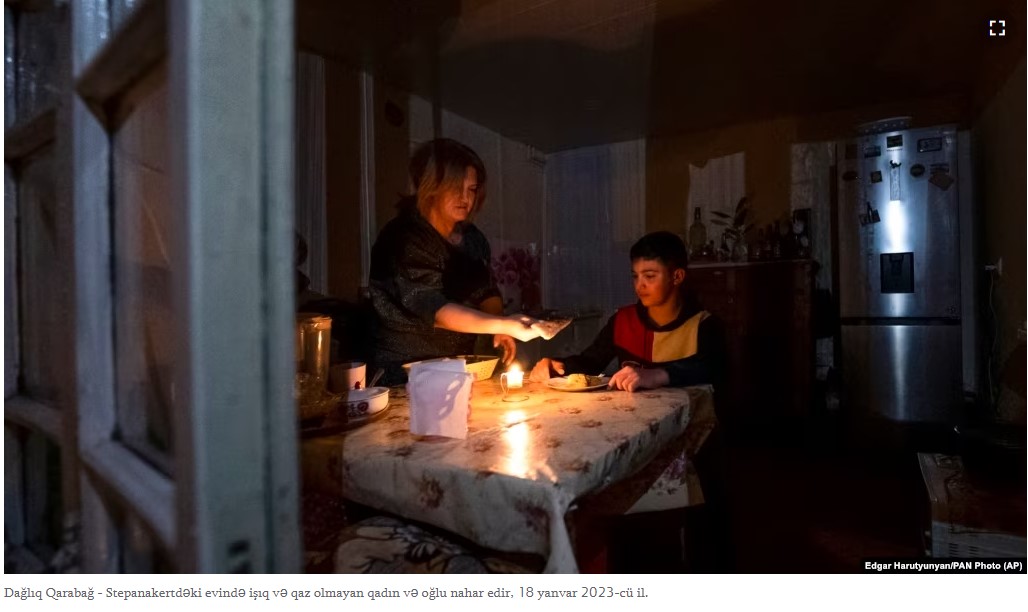
Interesting details emerge if we focus only on this photo even if we ignore the falsification of other facts in the article.
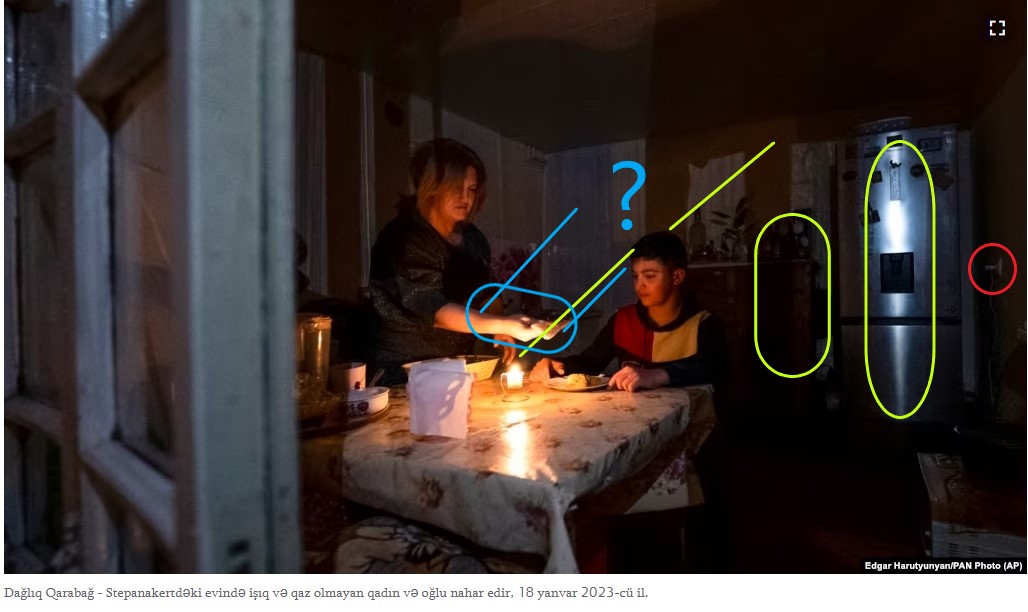
Let's pay attention:
1) If indeed the child was sitting in the candlelight, his projection (indicated by the yellow line) should have been clearly reflected on the back wall. In the present case, we do not see this projection.
2) Similarly, the projection of the hand of the woman handing the bread to the child (shown in blue) should be visible on the wall. This is not there either.
3) But what is the reason for the absence of these projections? The reflection of the bright flood of light reflected on the door of the refrigerator. That is, behind the point where the photo was taken, there is a flood of light, most likely from street lampposts or (less likely) additional light amplification equipment of the photographer. That is, brighter light prevents the creation of a projection by candle light. If the street lampposts are on, it is not ethical to take a photo of a family living without electricity and gas at home under a blockade and make propaganda.
4) No need to mention the refrigerator that is still connected to the grid (marked in red).
There are many such photos and staged situations.
Now let's clarify from where and "by whom" domestic gas is supplied to this region, and through which pipeline the blue fuel is transported.
First of all, let's note that the gas supply to Khankandi is not cut off for the first time and it has happened several times. In December 2022, the separatist regime and their social media resources and the Armenian media, which presented the action started by Azerbaijani eco-activists on the Shusha-Khankandi road to the world community as a "humanitarian blockade", tried to create the impression that Azerbaijan had deliberately closed the gas pipeline to Khankandi. The illegal company that controls the gas industry of the terrorist regime made a statement that starting from December 12, 2023, Azerbaijan imposed a "humanitarian blockade" on the Armenian residents of Karabakh under the guise of repairing the gas line. source
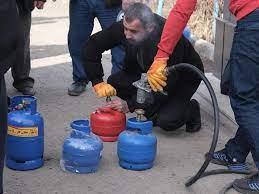
At that time, Azerigaz, the central gas operator of Azerbaijan, issued an official statement and exposed the Armenian fraud: "According to the misinformation spread in the Armenian press, the Azerbaijani side allegedly stopped the supply of gas to the areas where Russian "peacekeepers" are temporarily stationed. Undoubtedly, this serves to confuse the international community and mislead international public opinion. As Azerigaz PU, we declare that Azerbaijan has nothing to do with the issue. Thus, gas supply in the territories where Russian "peacekeepers" are temporarily located is carried out by Armenia, and these territories are not integrated into the gas supply system of our country." reference
Therefore, it is possible to state unequivocally that the interruption in gas transportation in the region has nothing to do with Azerbaijan.
How is gas supplied to Khankandi?
Gas supply to Khankandi was carried out within the unified gas network of Azerbaijan until a few years before the occupation of the Azerbaijani lands by the armed forces of Armenia, to be more precise, until 1990. During the Soviet period, this region was supplied with blue fuel for many years through the gas pipeline built from the city of Aghdam to Khankandi. During the occupation, the Armenian Armed Forces and terrorist groups completely destroyed all the necessary infrastructures in Karabakh, including the gas facilities. Gazprom Armenia, a subsidiary of the Russian Gazprom company which took over the fuel supply of the region that was left without gas due to the failure of the Aghdam-Khankandi gas line, built a new gas line to Khankandi by connecting the existing gas system network to the Gorus-Lachin-Khankandi line. The company even spent funds on the "modernization" of this pipeline, modernizing the terrorist regime's gas industry by carrying out minor repair and reconstruction works of the approximately 80-kilometer pipeline from the Armenian border to Khankendi. It created a so-called "production union" to manage the gas industry in the area. source
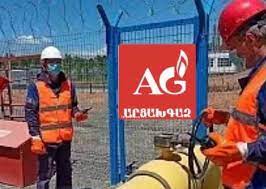
Of the 2.5 billion cubic meters of gas transported by Russia to Armenia during the year, approximately 50 million cubic meters are delivered to Khankandi and adjacent areas. Gazprom Armenia supplies gas to Khankandi through the Gorus-Lachin-Khankandi line of the Baku-Yevlakh-Aghdam-Khankandi-Lachin-Gorus-Nakhchivan gas pipeline, which was earlier built by Azerbaijan and is currently in operation. Although that pipeline is parallel to the Lachin corridor, it passes through the zone of responsibility of the Russian "peacekeepers" and Azerbaijan's gas operator has limited opportunities to physically interfere with the pipeline. reference
Apparently, since the Baku-Yevlakh-Aghdam-Khankandi gas route was deliberately disengaged by the Armenians, the gas transportation to Khankandi is done through the Khankandi-Lachin-Gorus line, which is in the hands of Gazprom Armenia. Currently, the design and paper works of gas lines in that region, as the schemes for the reconstruction of new lines are not fully ready, make it possible for the gas supplied to Khankandi to be temporarily transported by the old line.
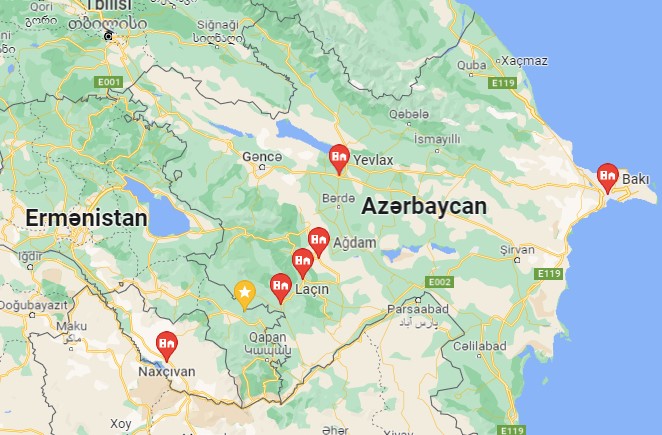
Only the approximately 1 km section of the pipeline near Shusha is under the control of Azerbaijan. However, since these areas generally belong to the zone of responsibility of the Russian "peacekeepers", physical intervention of the employees of the Azerbaijani gas operator is impossible, and the interruptions in the gas supply at different times have nothing to do with Azerbaijan.
After the Azerbaijani Army won the 44-day Patriotic War and Azerbaijan’s territorial integrity was ensured, the restoration and reconstruction of the necessary infrastructures in that region began. Karabakh and East-Zangazur economic regions were established according to the relevant decrees of the head of state. After economic regionalization, a single register of all infrastructures and economic schemes in that region is being drawn up. Therefore, since the illegal gas line from Armenia to Khankandi was included in the communal infrastructure system of the Karabakh economic region, the gas line passing through that area is actually being given to the control of the Azeriqaz central operator. In order to reconstruct the gas industry in Aghdara and Khankandi, create relevant infrastructures, ensure the operation of gas distribution networks and gas lines, ensure the control of gas supply and implement other measures, relevant tasks have been set before Azeriqaz PU.
According to the Action Plan of the "I State Program for the Great Return", the Aghdam-Khankandi gas pipeline should be built and put into operation by the government of Azerbaijan by 2025, gas supply should be provided from a single center by installing gas regulating points on the gas pipeline. This will automatically cut off the gas transported along the Gorus-Lachin line.
Source: Action Plan of the "I State Program for the Great Return". (Direction of action 4.4. Construction of the main network for gas supply to the territories. Clause 10, Page 24.)
Therefore, by committing various provocations, Armenia is purposefully trying to discredit the plans to take over the gas supply of Khankandi by Azerbaijan and build a new gas supply system. So far, the general picture is clear.
Now, let's pay attention to the chronology of the interruptions in gas transportation from Russia to Armenia in the last 4 months.
February 18, 2023. News headline: Gazprom-Armenia announces decrease in Russian gas supplies to the country. It is reported that due to the blockade of the "North Caucasian-Transcaucasian" gas pipeline in the Stavropol region, the supply of gas from Russia to Armenia has decreased significantly. This is reported by the press service of Gazprom-Armenia. On February 14, the gas pipeline was closed in the Stavropol region at approximately 16:00. This also caused interruptions in gas transportation to Armenia, and a considerable decrease in natural gas imported from Russia was observed. source
May 1, 2023. Gas transportation from Russia to Armenia was stopped from 08:00 on May 1, until 20:00 on May 4. Gazprom Armenia reported. According to the information, the reason for this is the repair work on the North Caucasus-Transcaucasia gas pipeline. source
May 04, 2023. News headline: "Gazpro has resumed natural gas supply to Armenia. According to the information provided by Gazprom-Armenia website, natural gas supply to Armenia has been resumed after the completion of the planned repair work on the North Caucasus-Transcaucasus gas pipeline. source
July 9, 2023. "Natural gas transmission from Armenia to Karabakh has been restored". Armenpress reported. The information says: "As a result of the restoration of gas supply from Armenia to Karabakh, the gas collected was initially supplied only to gas stations in the evening of July 8 for security purposes. Now, the employees of the company entrusted with these duties are carrying out additional technical work in order to prepare the gas supply system. In parallel with the preparatory work, the company gradually restored gas supply to all subscribers from today."
The official news agency of Russia, ITAR-TASS, made distortions in the information it disseminated. It is written in the mentioned news that "Azerbaijan, which controls the gas pipeline from Armenia to Karabakh (TASS wrote "Nagorno-Karabakh"), occasionally prevents the supply of gas to Karabakh. Armenian residents of the region have been deprived of gas supply for about 6 months." However, the news agency reported that the gas supply was interrupted due to a fault in the lines of Gazprom, and the problems in supplying gas to the Armenian residents of the region occurred only 3 times, and we have already explained the reason.
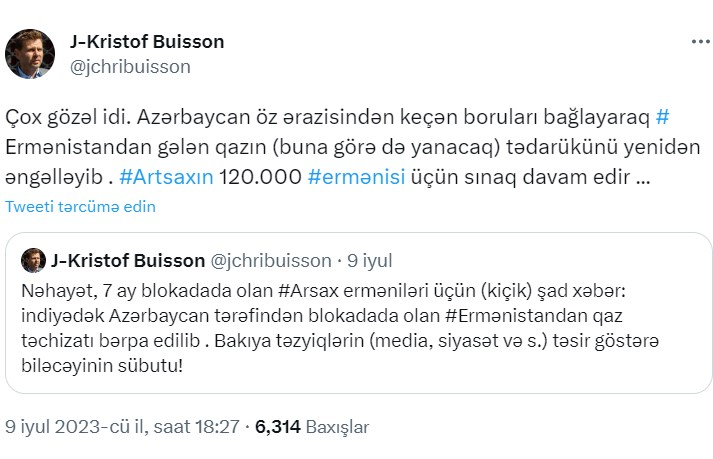

As you may have noticed, as soon as there is a problem with natural gas transmission from Russia to Armenia and from Armenia to Karabakh, Armenian media, social media activists and individuals and organizations operating with the support of the Armenian lobby abroad accuse Azerbaijan of keeping the Armenian residents living in Karabakh in a "gas blockade". However, the problem is self-inflicted.
There are two versions here:
First, Armenia is purposefully creating interruptions in the gas line under the name of technical failure, inciting the residents of Khankandi to dissatisfaction and protest against the central government of Azerbaijan, and aims to increase tension in the region. The main reason for this is the acceleration of intensive work towards the administration of Khankandi based on the laws of Azerbaijan, the elimination of all the strongholds of the separatist regime in Khankandi, and the finalization of the subjugation of the region to the legitimate legal principles of Azerbaijan, which these forces do not want to accept. In a word, disruptions in gas transportation are a purposefully committed sabotage.
The second is that the efforts towards the signing of the peace agreement between Armenia and Azerbaijan will come to a positive end and the creation of a basic environment for political and economic contacts between the two countries. Thanks to the processes of establishing peace and trust in the region, it goes without saying that the Yerevan administration, which accepts that the Armenians living in Khankandi will carry Azerbaijani citizenship, will not have objections or dissatisfaction with the regulation of economic and communal infrastructures and transits located in that region within the framework of Azerbaijan's sovereign rights. In this regard, the gas line from Armenia to Khankandi, as well as electric and communication cables, and other utility networks will be automatically transferred to the jurisdiction of Azerbaijan and will be managed from Baku. The Gorus-Khankandi gas line will be closed once and for all, and the residents of the city will receive fuel supply based on the rules of Azeriqaz by signing a contract with the gas operator of Azerbaijan. As a result, the presence of Gazprom and the illegal company in the region will disappear. There are forces that do not want this.
Result:
♦ There is no basis for the claims that "Azerbaijan stopped supplying gas to Khankandi".
♦ The main goal of this campaign is to accuse Azerbaijan of creating a "humanitarian crisis".
♦ The gas operator of Azerbaijan is not at all to blame for the suspension of natural gas supplied to Khankandi, "failure" and other problems.
♦ Armenia and interested forces are trying to use the "technical failure" of the gas pipeline for political purposes.




















